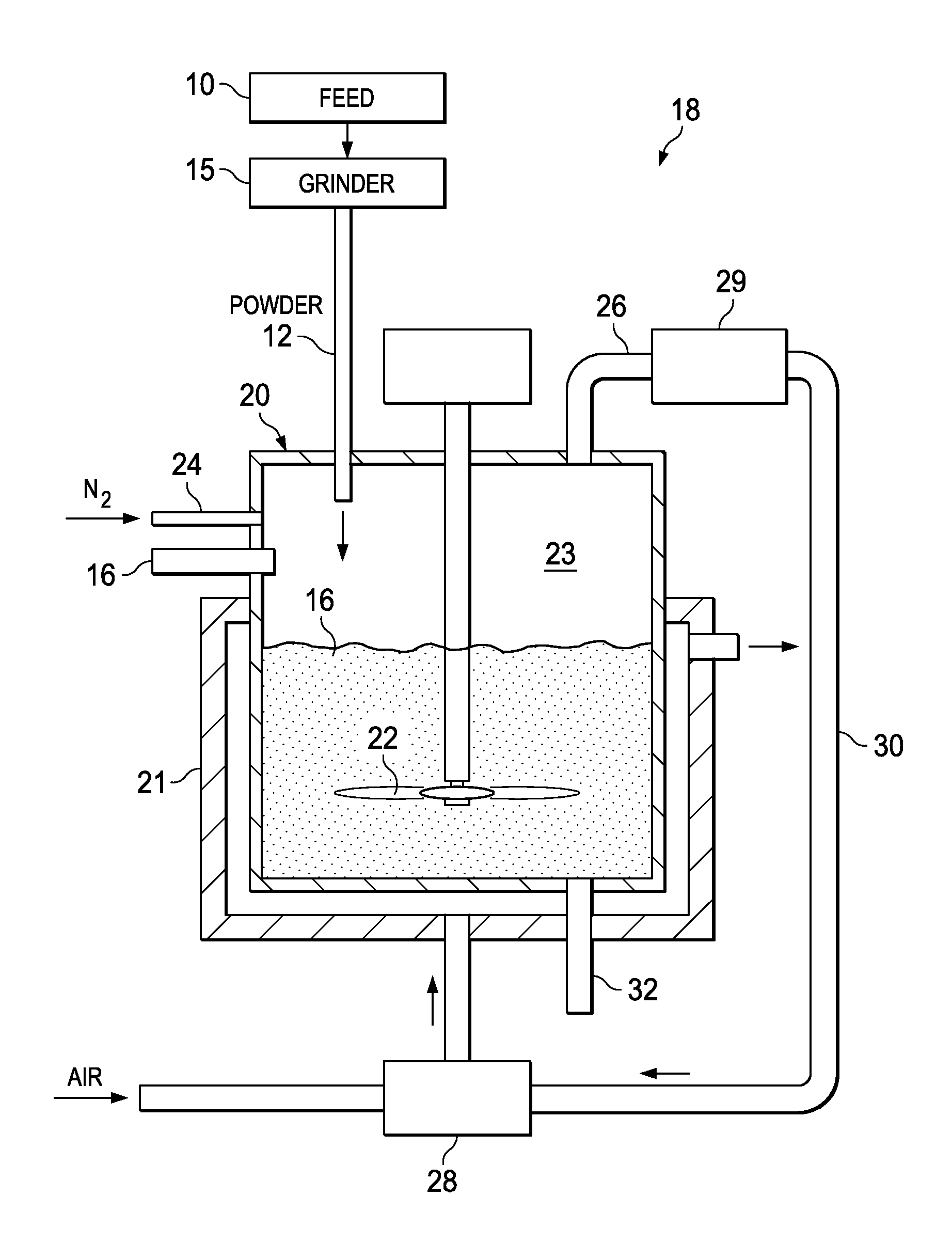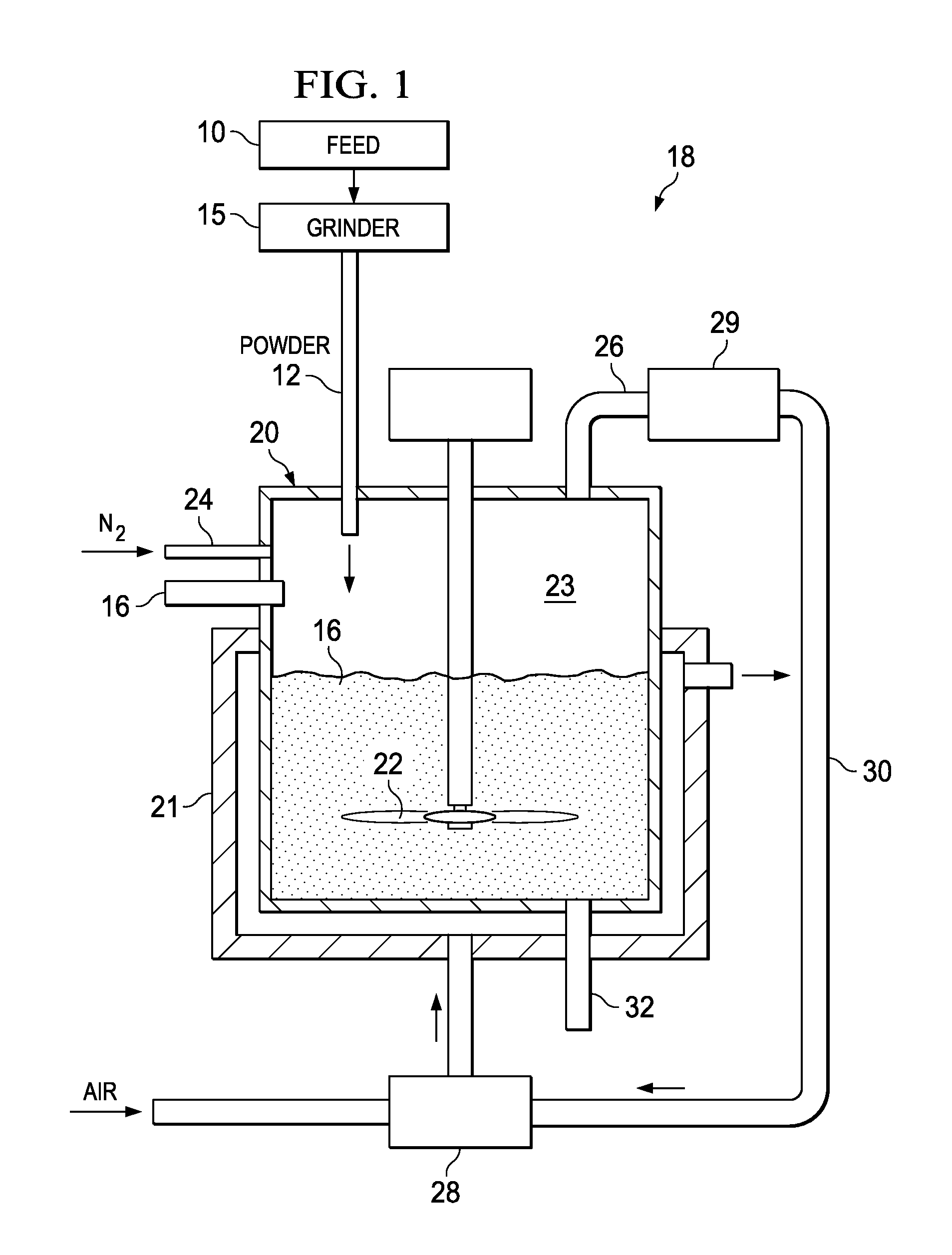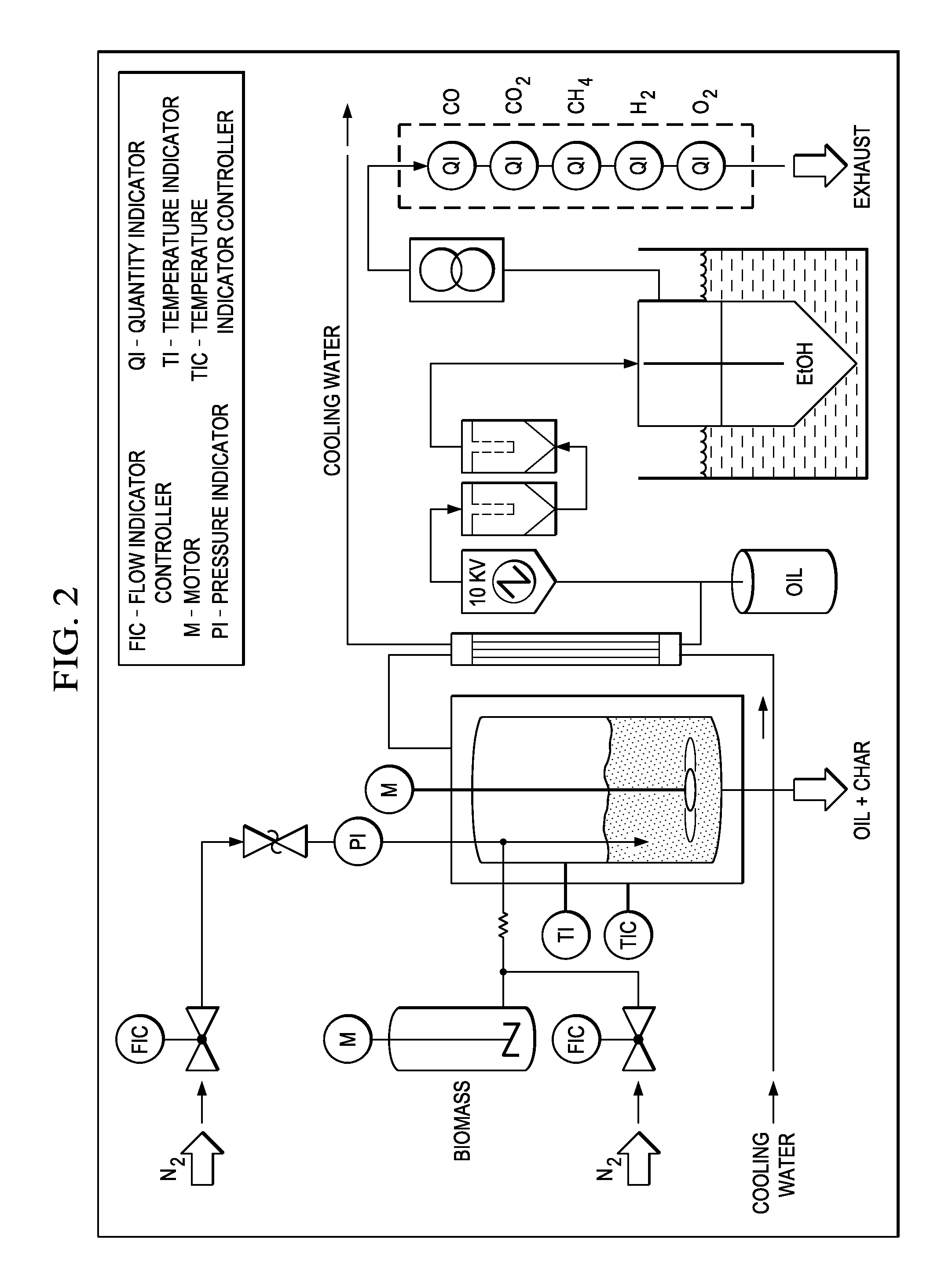Biomass pyrolysis in refinery feedstock
a biomass pyrolysis and feedstock technology, applied in the field of pyrolysis, can solve the problems of difficult to achieve good heat transfer on both sides of the heat exchange surface, difficult to provide enough heat with reasonable gas flow-rate, and difficult to scale up methods, etc., to achieve easy admixture, improve pyrolysis, and improve cost and efficiency
- Summary
- Abstract
- Description
- Claims
- Application Information
AI Technical Summary
Benefits of technology
Problems solved by technology
Method used
Image
Examples
example 1
[0033]FIG. 2 is an embodiment of a laboratory scale biomass pyrolysis reactor used in this Example. The biomass pyrolysis reactor was electrically heated and had a condenser train after the reactor.
[0034]With switch grass as the biomass and VGO as the refinery feedstock, experiments were performed at temperatures of about 320° C., about 350° C., about 380° C. and about 400° C. The average biomass feed rate was about 217 g / h with a nitrogen flow rate of about 50 l / h. The refinery feedstock was fed into a conveyor tube at a flow of about 15 l / h. The experiments lasted typically from about 1 to about 2 hours. FIG. 3 is a chart for the product distribution and FIG. 4 is an elementary analysis of the bio-oil.
PUM
| Property | Measurement | Unit |
|---|---|---|
| temperature | aaaaa | aaaaa |
| size | aaaaa | aaaaa |
| size | aaaaa | aaaaa |
Abstract
Description
Claims
Application Information
 Login to View More
Login to View More - R&D
- Intellectual Property
- Life Sciences
- Materials
- Tech Scout
- Unparalleled Data Quality
- Higher Quality Content
- 60% Fewer Hallucinations
Browse by: Latest US Patents, China's latest patents, Technical Efficacy Thesaurus, Application Domain, Technology Topic, Popular Technical Reports.
© 2025 PatSnap. All rights reserved.Legal|Privacy policy|Modern Slavery Act Transparency Statement|Sitemap|About US| Contact US: help@patsnap.com



